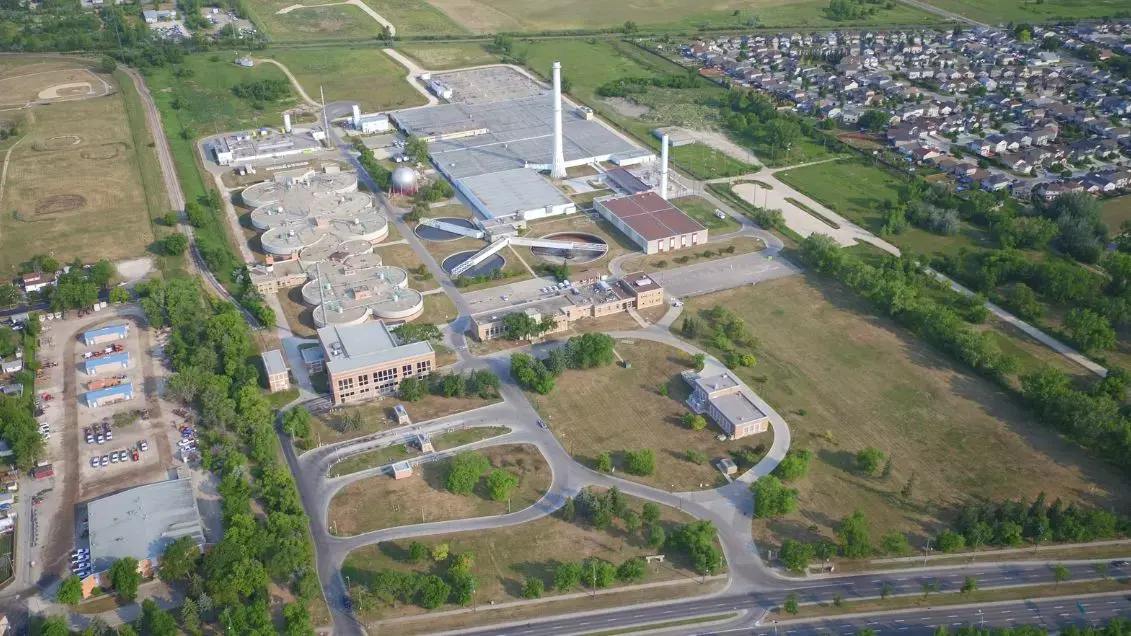Water is far more than a utility. It's the essential operating system of every community on the planet—the foundation for public health, economic growth and competitiveness. Yet despite its critical importance, water infrastructure continues to be undervalued, underfunded and increasingly at risk.
The hard truth is this: too many of our water systems were engineered for a different century and are being managed with a "good enough" mindset that is cracking under pressure. Aging infrastructure, volatile climate patterns, escalating cyber threats, a shrinking talent pool and lack of capital for upgrades are creating a widening gap between what communities expect and what systems can actually deliver.
Exacerbating the situation, municipal water infrastructure also represents a significant portion of costs associated with the development of affordable housing. According to the Federation of Canadian Municipalities, water and wastewater infrastructure alone accounts for 50% of the estimated $107,000 required to develop and support one housing unit.
Closing that gap is not optional. And the longer we wait, the more expensive it gets.
But here's the good news: solutions exist. Digital operations, advanced treatments, water reuse and innovative financing models are already delivering results. What's needed now is bold action from all levels of government leaders.

The Challenges: Why Today's Water Systems Are Falling Behind
Across Canada, we're facing a perfect storm of challenges.
Aging infrastructure and deferred maintenance: Many of our pipes, treatment plants and pumping stations are 50, 60, even 100 years old. They were built for populations half our current size and weren't designed for today's demands. Every year we defer maintenance, increasing the risk of catastrophic failure and the cost of eventual repair.
Climate and environmental pressures: We're seeing more frequent droughts, floods and extreme weather events. Water sources that were reliable for generations are becoming unpredictable. Treatment plants designed for historical conditions are struggling with new contaminants and variable water quality.
Technology and cybersecurity vulnerabilities: As we digitize operations, we also create new attack surfaces. Water systems are increasingly targeted by cyber criminals. A successful attack doesn't just disrupt service; it can threaten public health.
Workforce gaps: The water sector workforce is aging out. We're losing institutional knowledge faster than we're building new expertise. Young people aren't entering the field in sufficient numbers, and those who do often lack training in the digital tools that modern systems require.
Affordability and public perception: Citizens expect reliable, safe water at low cost. But they often don't understand the true cost of maintaining and upgrading systems. This creates political pressure to keep rates low, which perpetuates the cycle of underinvestment.
These challenges aren't isolated—they're converging into a systemic threat. Local leaders must recognize the full breadth of this challenge to address it effectively.

The Innovation Imperative: Modern Solutions for a Changing World
Now for the encouraging part: we don't need to wait for magical new technologies. The tools we need to build systems for tomorrow are available today, and municipalities across Canada are implementing these to help improve their water infrastructure.
- Advanced water treatment technologies, like membrane filtration, advanced oxidation and biological treatment processes, can remove emerging contaminants, handle variable source water quality and enable water reuse at scale. These treatment processes are proven and increasingly cost-effective, extending the lifespan of operations.
- Digital transformation and AI are revolutionizing operations. Smart sensors provide real-time monitoring and predictive analytics identify problems before they become failures. AI also optimizes treatment processes, reducing energy use and chemical costs while improving water quality. The use of digital twins allows operators to test scenarios and train staff without risking actual infrastructure.
- Cybersecurity standards and resilience must be built in from the start. This means network segmentation, continuous monitoring, incident response plans and regular training. The cost of prevention is a fraction of the cost of recovery from an attack.
- Decentralized and modular systems offer flexibility that traditional centralized infrastructure can't match. Smaller, distributed treatment systems can serve growing areas without massive upfront investment. They're easier to upgrade incrementally and more resilient to localized failures.
- Education and workforce development are critical, especially in an industry where most specialists are rapidly reaching retirement. We need to establish partnerships with technical schools and universities, and create apprenticeship programs that combine traditional operations knowledge with digital skills. There’s also an opportunity to make water careers attractive to the next generation by showcasing the technology, impact and innovation in the industry, and guiding them through the training and education needed for a successful career.

The Business Case: The ROI of Water Investment
Let’s address the elephant in the room: cost. Yes, modernization requires investment. But the return on that investment—economic, operational and social—far outweighs the costs.
Water infrastructure is an economic development engine. Businesses won't move to communities with unreliable water or wastewater systems. Developers won't build without adequate capacity. Every dollar invested in water infrastructure generates multiple dollars in economic activity. Reliable water systems attract investment, create jobs and increase property values.
Investment in resilience also avoids catastrophic costs. A major water main break can cost millions in emergency repairs, property damage and business disruption. A treatment plant failure can trigger boil-water advisories that damage community reputation and economic activity. Cyber attacks can cost tens of millions in recovery. Proactive investment in resilience is far cheaper than reactive crisis management.
Operational efficiency gains pay for themselves. Energy-efficient pumps, optimized treatment processes and leak detection systems reduce operating costs year after year. Many utilities find that efficiency improvements alone can fund significant portions of their capital programs.
The bottom line: strategic water investment isn't a cost, it's a core driver of community prosperity. The question isn't whether we can afford to invest. It's whether we can afford not to.
The Path for Partnerships and Innovative Financing
How do we fund this transformation? Traditional municipal financing alone won't be sufficient. We need new approaches.
Public-private partnerships can accelerate modernization by bringing private capital, expertise and innovation to public infrastructure. Done right, alternative delivery contracts (IPS, PDB, CMAR) and Public Private Partnerships transfer appropriate risks to parties best able to manage them while maintaining public oversight and accountability.
These project delivery models need to account for the operation and maintenance for the life of the facility. It is absolutely critical that the O&M entity be engaged during the planning and development of water and wastewater infrastructure projects.
Industrial partnerships create mutual value. Large water users like manufacturers, data centers or food processors have strong incentives to ensure reliable supply and can co-invest in infrastructure that serves both their own needs and community needs.
Privatization, while controversial, deserves honest discussion. In some contexts, private operation of public assets, with appropriate regulation, can deliver better service at lower cost. The key is ensuring public interest protection through strong contracts and oversight.
Innovative financing models are emerging. Green bonds attract investors seeking environmental returns. Asset recycling converts existing assets into capital for new investment. Value capture mechanisms ensure that those who benefit from infrastructure help pay for it.
New business models are also evolving. Water-as-a-service approaches, where customers pay for outcomes rather than infrastructure, can align incentives and attract new capital. Regional consolidation can achieve economies of scale while maintaining local accountability.
Our future path requires creativity in how we finance, deliver and operate water systems. No single model fits all communities, but options exist for every context. Traditional municipal funding alone cannot meet the challenge. Diverse, creative financing is essential. Some innovative financing tools include:
- Green bonds attract investors seeking environmental returns.
- Asset recycling converts existing assets into new investment capital.
- Value capture ensures that those benefiting from infrastructure help fund it.
- Water-as-a-service models align incentives around performance, not ownership.

The Water-Smart City of the Future
Forward-thinking cities are and will operate integrated infrastructure where water, wastewater, stormwater and energy systems work together, optimizing across the whole system rather than in silos.
They'll have digitally enabled operations where AI and automation handle routine tasks, freeing skilled operators to focus on optimization and problem-solving. Real-time data will enable proactive management, and digital twins will support continuous improvement.
Water reuse and circularity will be standard practice. Treated wastewater will be a resource, not waste. Nutrients will be recovered. Energy will be generated from organic matter. Water will flow in loops, not just lines.
And critically, these systems will serve community and equity goals. Everyone will have access to safe, affordable water. Vulnerable populations will be protected from climate impacts. Water infrastructure will be a source of community pride, not just invisible pipes.
At Toronto's Ashbridges Bay, for example, biosolids are turned into high-value fertilizer products which are being used on Ontario farms versus being disposed of in a landfill, creating a revenue stream while solving a waste management challenge. And in Metro Vancouver, the waste-to-energy system processes biosolids that will be converted to a district heating system which will nearly triple its current energy production.
These aren't small pilot projects. They are major infrastructure investments delivering economic returns while meeting environmental objectives. They prove that economic growth and environmental performance aren't trade-offs but complementary when we approach infrastructure strategically.
Leading the Water Infrastructure Transformation
The challenges facing our water systems are real, urgent and growing. But so are the solutions. We have the technology. We have proven approaches. We have financing options. What we need now is leadership and will.
Every community leader has a choice: invest strategically now or pay catastrophically later. Build systems for 2050 or patch systems from 1950.
The communities that thrive in the coming decades will be those that recognize water infrastructure as what it truly is: not a cost center, but a competitive advantage. Not a problem to manage, but an opportunity to seize.
Start by assessing your current systems honestly. Engage your community in understanding the true value and cost of water. Build partnerships that share risk and accelerate progress. Invest in your workforce. Embrace innovation.
And most importantly: act now. Every year of delay makes the challenge harder and more expensive.
Water-smart cities are being built today by leaders who understand that reliable, resilient, trusted water systems aren't just infrastructure. They're the foundation of everything else we want to achieve.



